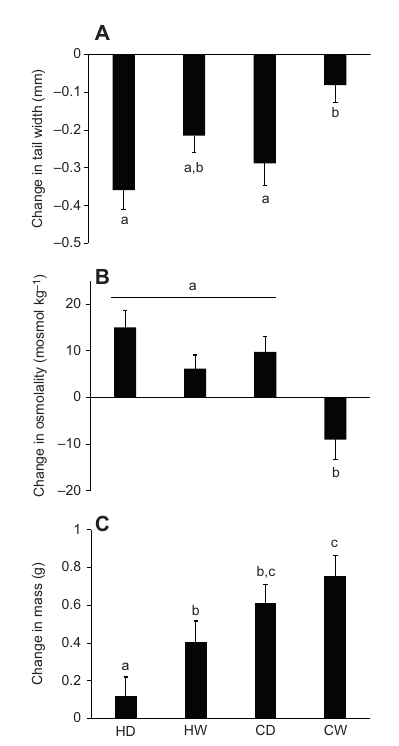One of the greatest current threats to biodiversity is climate change. However, understanding of organismal responses to fluctuations in temperature and water availability is currently lacking, especially during fundamental life-history stages such as reproduction. To further explore how temperature and water availability impact maternal physiology and reproductive output, we recently investigated the viviparous form of the European common lizard (Zootoca vivipara) in a two-by-two factorial design manipulating both hydric and thermal conditions. We collected blood samples and morphological measurements during early pregnancy and post-parturition to investigate how water availability, temperature and a combination of the two influence maternal phenology, morphology, physiology and reproductive output. Our experiment shows that dehydration during gestation negatively affects maternal physiological condition (lower mass gain, higher tail reserve mobilization) but has little effect on reproductive output. These effects are mainly additive to temperature regimes, with a proportional increase in maternal costs in warmer environments. This new study demonstrates the importance of considering combined effects of water and temperature when investigating organismal responses to climate changes, especially during periods crucial for species survival such as reproduction.
Available at Journal of Experimental Biology online

Original figure of the paper showing the joint effects of temperature (H: hot, C: cold) and water availability (D = water restricted, W = water supplemented) in female common lizards. The data are change in tail width, change in plasma osmolality (an inverse measure of dehydration) and change in body mass during gestation.
